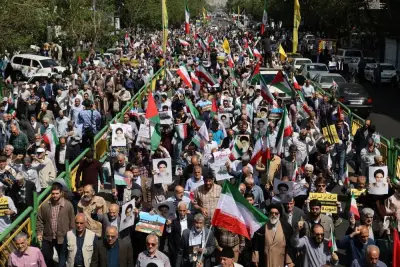Dr Sobers-Khan shows a painting, Portrait of Muhammad Reza Khan, from Mughal India (Faizabad), 1770. Ink, opaque water colour and gold on paper were used for this painting. PICTURE: Jayaram
By Joey Aguilar/Staff Reporter
The Museum of Islamic Art (MIA) has opened the second instalment of its “Building Our Collection” exhibition, giving visitors a chance to see the museum’s collection of miniatures and calligraphy from Safavid Iran and Mughal India.
Some 27 objects, including the raw materials used for production, are on display on the fourth floor of the museum.
Curated by Dr Nur Sobers-Khan, MIA curator for Turkey, the exhibition is divided into four themes and will run until February 21, 2015. Entry is free.
The exhibition is supported by full educational materials and activities, including guided public tours, talks by experts in Islamic art and opportunities for teachers to explore museums as places of inspiration.
“Collecting miniature paintings has always been a sign of artistic refinement and certainly the Mughal emperors, just like the patrons of arts today, were always keen to demonstrate their aesthetic appreciation of fine art objects,” Dr Sobers-Khan told reporters yesterday during a media tour of the exhibition.
This is one of the reasons why such paintings have remained very popular to this day, according to her.
She noted that artists have used a range of natural materials for the art objects - some from plants, minerals and different types of rocks such as malachite as well as various types of metals, including gold and silver.
Dr Sobers-Khan said insects such as beetles were crushed and used for red dye – making the colour of the paintings vivid even after 100 or 200 years.
“It was an era that used science and chemistry to the extent such as how to combine different materials to make the paint that would actually stick to the paper to be coherent and have the correct colour,” she stressed. “It is a fascinating science in itself.”
She pointed out that “Building Our Collection: Mughal and Safavid Albums”, a selection of miniature paintings and calligraphic compositions, shows a wide-ranging journey of artistic development from the Middle East to Asia and Europe across the centuries.
Some of the miniature paintings include “Portrait of a Maiden in European Costume” by Mohamed Tahir in Iran (17th century); “Lady Reading an Album of Calligraphy”, which is also from Iran (16th century) and made of ink, opaque water colour and gold on paper; and the Shah Isma’il Safavi with his Descendants by Shah Qasim from Mughal India (17th century) using the same materials.
MIA has also produced two short films for visitors showing how the museum’s staff contribute to building, researching and interpreting what it described as a renowned collection of Islamic art.
“It offers a rare opportunity for visitors to gain insight into the process of collecting and displaying art in a museum,” said Dr Sobers-Khan, also the Iran Heritage curator for Persian manuscripts at the British Library from 2012 to 2013.
She believes that such exhibitions educate the public about the story behind every art object: from its creation and historic context to their travels and biography as well as their preservation in MIA’s collection.
Earlier this year, the first edition of “Building Our Collection” featured rare and beautiful ceramics from Islamic Spain.
The museum has also collected manuscripts, ceramics, metal, glass, ivory, textiles, wood and precious stones from three continents, including countries across the Middle East, Spain and China. MIA’s collection dates from the 7th through to the 19th century.



